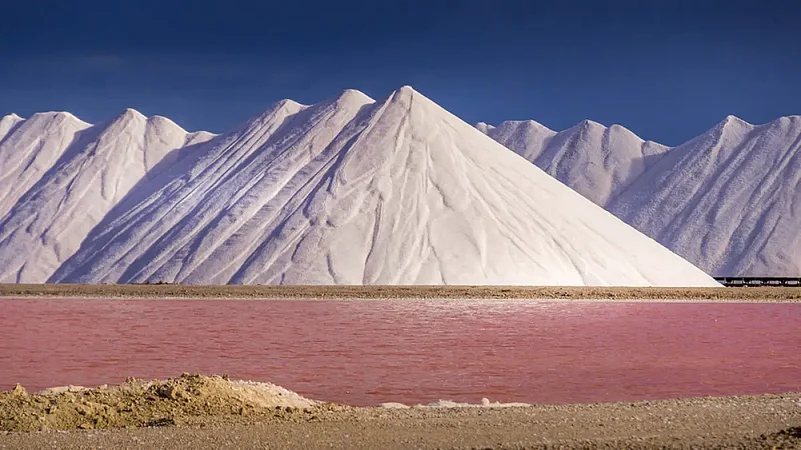There are salts across the world that are worth quite a penny, some are sourced from the most amazing landscapes, some are ancient dating back to the time of the Incas, and a few even come with royal seals of approval. Here are eight highly valued salts across the world that you must get a taste of on your travels.
Bonaire Salt
The salt pyramids of Bonaire (located 60 miles from Venezuela) are iconic and have a historic lineage being a part of the centuries-old Caribbean trade routes. The landscape is quite spectacular with volcanic rocks at its core, and coral reefs and the sea all around. To cap the drama are the 50-feet high white salt pyramids at the southeastern tip.
Advertisement

Here's the best part - the place also plays host to a pink flamingo sanctuary. The birds visit because of the different kinds of brine shrimp, algae and halobacteria present in the unique ecosystem created by the high salinity and mierals which give it the brilliant pink hue. The bacteria have rhodopsin pigment which get concentrated in the brine shrimp, and these are eaten by the flamingoes. And they too get a glorious pink plumage as a result. How amazing is that?
Fleur De Sel
This ancient salt from France (the name translates to 'flower of salt') is prized around the world for its delicate flavour and a subtle fragrance of violets. It is collected from the thin and delicate crust on the surface of seawater when it evaporates. Sourced mostly from the coast of Britanny, the salt has healing properties and has been used for many centuries as a purgative and a salve. It is one of the most expensive salts in the world as it can only be produced in small batches, and by hand.
Advertisement
Pink Himalayan Salt
You would be familiar with this salt variety - its is now found in almost all supermarkets in urban cities in India, and online. The pretty orange pink-colored rock crystals come from old salt mines in the Salt Range in the foothills of the Himalayas in Pakistan. The Khewra Salt Mine is the largest of the mines.
Paška Sol

This unique sea salt comes from Pag island in Croatia which has a tradition of salt production. It has therapeutic properties as it contains minerals found in the sea.
Maras Salt

This Peruvian salt comes from ancient salt pans in the valley near Cusco where you will find the stunning Salineras de Maras with salt pans dating back to the time of the Incas. The salt gathered here is said to be among the best in the world. The inland sea salt deposits cover the hillside, evaporating under the Andean sun rays. The Salt Mines of Maras are on the tentative list of UNESCO World Heritage sites.
Hawaiian Red Salt
This unrefined sea salt is also known as alaea salt. It gets its colour from the volcanic clay rich packed with iron oxide (known as ʻalaea') which gives it a red color. It has been used in traditional Hawaiian dishes for decades, and to cleanse and purify home spaces, temples and even boats.
Advertisement
Maldon Sea Salt
This one comes from a 135-year-old family-owned salt works on the southeast coast of England, in boxes adorned with the Royal Warrant of the Queen of England. Harvested since 1882, the salt is formed in unique pyramid-shaped flakes.

Salts in Japan
As in most other spheres of life, the Japanese have perfected the aesthetics of salt to a high level. They have so many different kinds of salt that it will make you dizzy. One of the best known salts in Japan is the Shinkai deep sea salt made in the Noto Peninsula where the water is collected from a depth of 2,000 feet to 3,000 feet. The presence of magnesium and other minerals give it a sharpness which brings out the flavour in food eaten fresh and raw. Then there is the Agehama method of salt making that has been declared ‘a national intangible folk cultural asset’ by Japan’s Culture Agency in order to generate awareness about the traditional method as well as preservation of the cultural history associated with it. Japan's Moshio salt is an ancient one - it uses dried sea weed or its ash, simmered in seawater, and dried further.




















